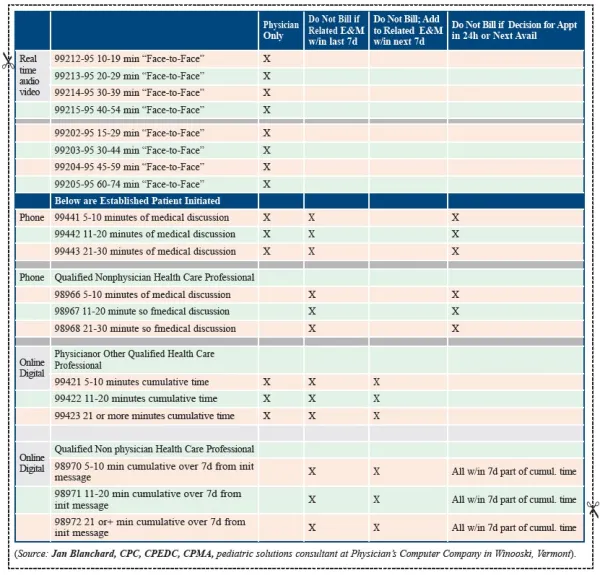Maximize Your Surgeons’ E/M Options Next Year
Add this clip-and-save chart to your telehealth toolbox. After adjusting to telehealth changes with the end of the COVID-19 public health emergency (PHE) earlier this year, providers are coming to grips with the fact that this type of patient encounter isn’t going anywhere. That means your surgery practice should study the possibilities and decide how to make the most of telehealth options in 2024. Background: The Centers for Medicare & Medicaid Services (CMS) plans to implement the Consolidated Appropriations Act (CAA), 2023, telehealth services provisions through the end of 2024, according to the calendar year (CY) 2024 Medicare Physician Fee Schedule (MPFS) final rule. That includes paying the non-facility MPFS rate for at-home telehealth services, lifting geographic restrictions, and allowing Federally Qualified Health Centers (FQHCs) and Rural Health Clinics (RHCs) to provide telehealth services. Opportunity: Telehealth provides patient convenience and accessibility that could dramatically improve care quality and compliance when patients are able to schedule appointments without taking time off from work or taking kids out of school. Code Telehealth With Confidence You need to consider the following factors as you strive to master compliance and coding for these services: Tool: The clip-and-save chart at the end of this article provides a handy list of telehealth codes in a format that considers all the preceding factors. Look For a Good Vendor Your surgery practice may already be using a telemedicine platform, but the market is maturing as more players enter the field. That means you might need to reassess what’s best for your office. “We’ve got a lot of different types of technology [for telemedicine]. It’s really a noisy space, and it’s making it very difficult for buyers to make a good, solid decision on what’s the right technology pathway to go,” says Lisa Lavin, founder and CEO, Ōmcare Inc. in Bloomington, Minnesota. If you’re experiencing this kind of confusion, consider the following factors in your decision making: Establish a Solid Training Program Even with an easy-to-use technology, you can expect a learning curve. Users will need to learn the technology, and also how to integrate new processes into everyday practice. Do this: Involve surgeons, schedulers, coders, and any other relevant staff in the training. Here are some of the items you should cover: Note: Don’t underestimate the role practice schedulers play. This is an area that some practice managers overlook. “Understanding which visits could be done with a simple telehealth visit and which ones require an in-person visit might be the most important success factor,” says Chip Hart, director of Pediatric Solutions at Physician’s Computer Company in Winooski, Vermont.






